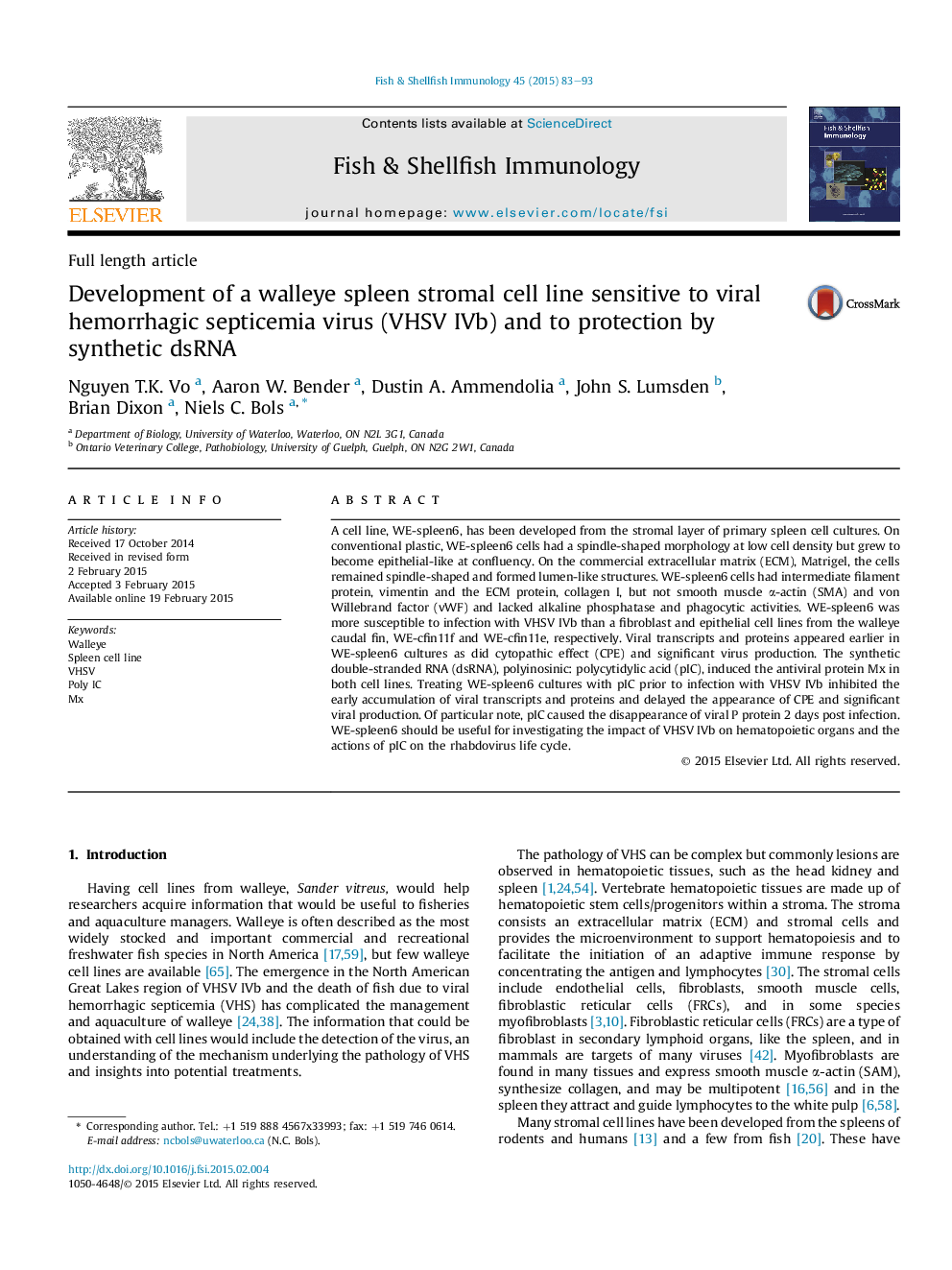| Article ID | Journal | Published Year | Pages | File Type |
|---|---|---|---|---|
| 10971783 | Fish & Shellfish Immunology | 2015 | 11 Pages |
Abstract
A cell line, WE-spleen6, has been developed from the stromal layer of primary spleen cell cultures. On conventional plastic, WE-spleen6 cells had a spindle-shaped morphology at low cell density but grew to become epithelial-like at confluency. On the commercial extracellular matrix (ECM), Matrigel, the cells remained spindle-shaped and formed lumen-like structures. WE-spleen6 cells had intermediate filament protein, vimentin and the ECM protein, collagen I, but not smooth muscle α-actin (SMA) and von Willebrand factor (vWF) and lacked alkaline phosphatase and phagocytic activities. WE-spleen6 was more susceptible to infection with VHSV IVb than a fibroblast and epithelial cell lines from the walleye caudal fin, WE-cfin11f and WE-cfin11e, respectively. Viral transcripts and proteins appeared earlier in WE-spleen6 cultures as did cytopathic effect (CPE) and significant virus production. The synthetic double-stranded RNA (dsRNA), polyinosinic: polycytidylic acid (pIC), induced the antiviral protein Mx in both cell lines. Treating WE-spleen6 cultures with pIC prior to infection with VHSV IVb inhibited the early accumulation of viral transcripts and proteins and delayed the appearance of CPE and significant viral production. Of particular note, pIC caused the disappearance of viral P protein 2 days post infection. WE-spleen6 should be useful for investigating the impact of VHSV IVb on hematopoietic organs and the actions of pIC on the rhabdovirus life cycle.
Related Topics
Life Sciences
Agricultural and Biological Sciences
Aquatic Science
Authors
Nguyen T.K. Vo, Aaron W. Bender, Dustin A. Ammendolia, John S. Lumsden, Brian Dixon, Niels C. Bols,
